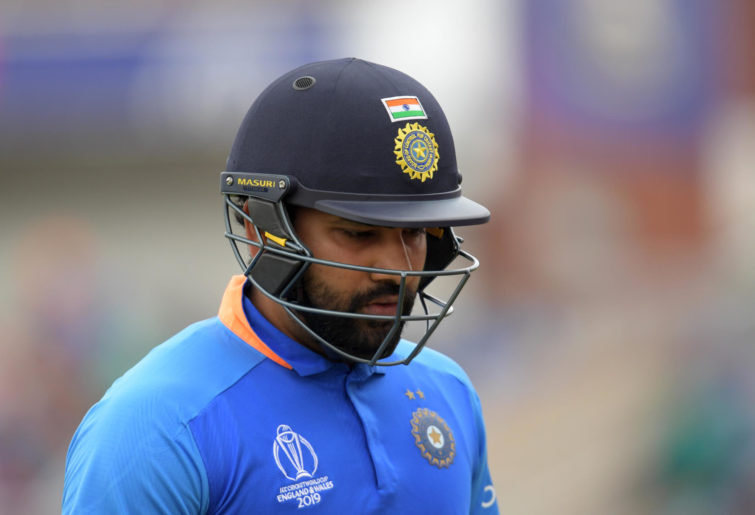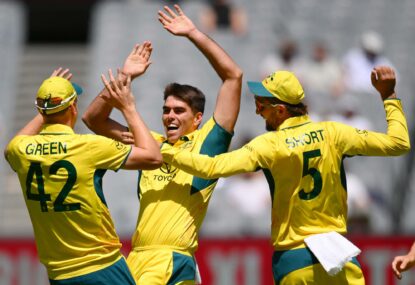On September 19, in the season-opener against Chennai Super Kings, Mumbai Indians’ skipper Rohit Sharma whacked a terrific boundary off the very first ball of the IPL 2020 to kickstart the proceedings with a bang.
He took a step back, waited patiently for the delivery, and calmly pierced a gap between two fielders with a nonchalance we usually associate with him.
Some 53 days later, in Dubai, a city well known for everything except cricket, the stylish right-hander scored a well-paced half-century and led the Mumbai-based franchise to the record fifth championship title.
Two acts, one protagonist. In normal days, both the acts would have evoked thunderous cheers from the over-enthusiastic fans filling up the stadiums. But in times like this, when the world is still struggling to cope up with the virus, no such things happened.
Instead, the automated fake crowd noise was played to interrupt the deafening silence of the stadium. A noise that was not only infuriatingly monotonous but totally out-of-sync with the reality as well. The collective human emotion never responds in the same way to a cracking six as they do upon singles or doubles.
Something which tech-utopianists and sound engineers failed to take into account.
The point here is not to explain the shortcomings of a stimulated sound; it is to trace the altered dynamics of the relationship between live crowds and the game in the post-pandemic era.
How much do spectators who come to watch games matter?
How much do modern-days cricket care about their patrons? Or do they even care?

Rohit Sharma (Photo: Dibyangshu Sarkar/AFP via Getty Images)
The presence of the crowd has always been among integral aspects of the game. The spectators, even in their passivity, influence whatever a player does between the 22 yards. Their hostility intimidates even the most resolute professionals.
It flirts with their mental fortitude, makes even the most agile fielders drop a sitter, sometimes compels a batsman to put the wrong foot forward, and at times gets deep enough inside the head to break the sanity of bowlers.
“The audience amplifies everything you are doing, the bigger the crowd the bigger the occasion, its magnitude, its emotion,” once quipped former India cricketer Rahul Dravid in 2011.
More than that, for people grinding relentlessly in the giant wheel of the market, the stadium offers a dreamscape from the banality of life, a sense of belonging and togetherness in an increasingly alienated world. The power and prestige of the Indian Premier League (IPL), and cricket in general, come directly from those fans in the stadium.
Cloned after the incredibly popular English Premier League, one of the most tedious jobs for the franchise owners in the beginning was to replicate the cultural connection those English clubs enjoyed in their nation.
They did this largely by adding local icons to their squad and ruthlessly employed regional flavours in their marketing campaign.
The Rajasthan-based franchise added Royals to their name, reminding people of the glorious heritage of the state. The teams from the south – CSK, RCB, SRH – launched promotional campaigns in local languages. Kolkata Knight Riders slogan – “Korbo, Lorbo, Jeetbo” (Bengali for Do, Fight, Win) – immediately struck a chord with people from Bengal.
Mumbai Indians roped in Sachin Tendulkar – a proud Mumbaikar- while Delhi Capitals acquired the services of famous Delhites like Virender Sehwag and Gautam Gambhir.
Establishing the cultural connection with the fans was a key to unlock gold mines. It is a rather simple but time-honoured equation: the revenue generated is more or less directly proportional to the strength of the bond between the franchises and the region they represent.
Up until this year, a mere imagination about the possibility of the IPL without any spectators would have evoked some amusing reactions. But what once was a daunting proposition for many soon morphed into a reality, courtesy the deadly virus that hasn’t yet shown any intention of slowing down.
Moreover, it has laid bare the ever-widening chasm between ‘us’ and ‘them’ in cricket. While the spectators are more than welcome, the cricket can do well without them, and that too without taking a massive dent in the revenue.
As Jerry Seinfield, an American stand-up comedian, actor and writer once said: “People come back from the game yelling, ‘We won! We won!’ No: they won; you watched.”
Not only that, the BCCI has already signed an MoU with Emirates Cricket Board which makes the UAE as an alternative option for IPL 2021 and India’s subsequent home series, if the COVID-19 cases continue to rise in India.
For the BCCI, the whole world is a global village. If India is on its knees, there’s always a possibility of shifting the carnival to the other nation. The territorial boundaries are meant to be broken, as per the spirit of globalisation.
The players are a mere pawn, and anything that falls outside their revenue model or generates very little revenue can be duly ignored.





































































































